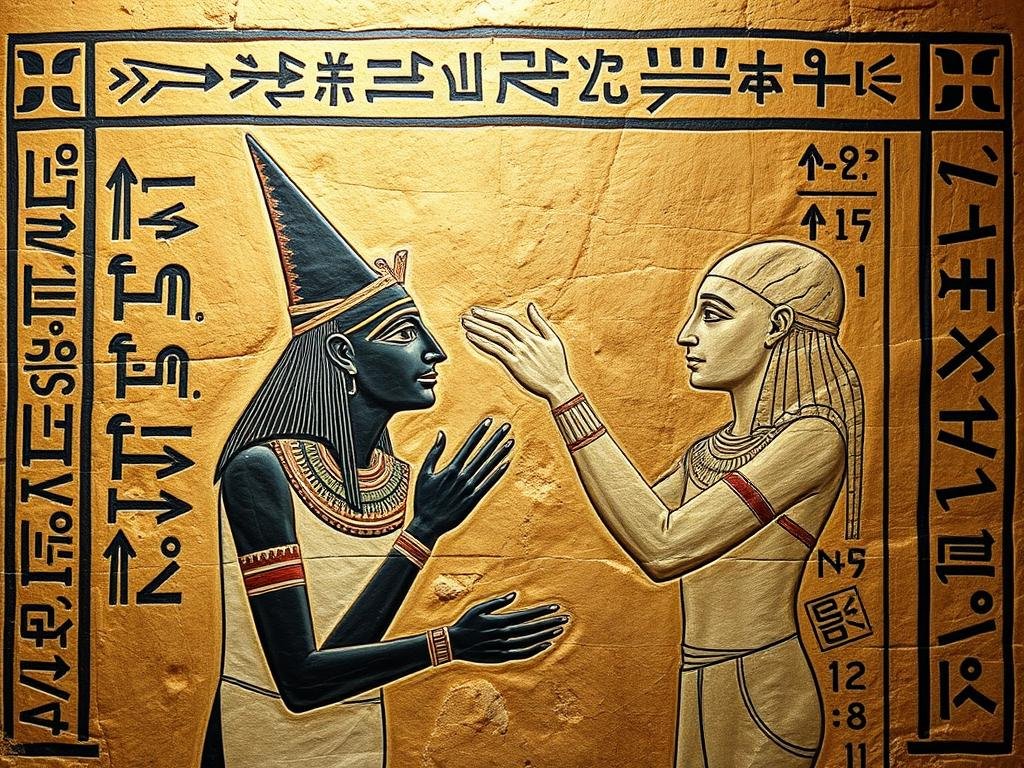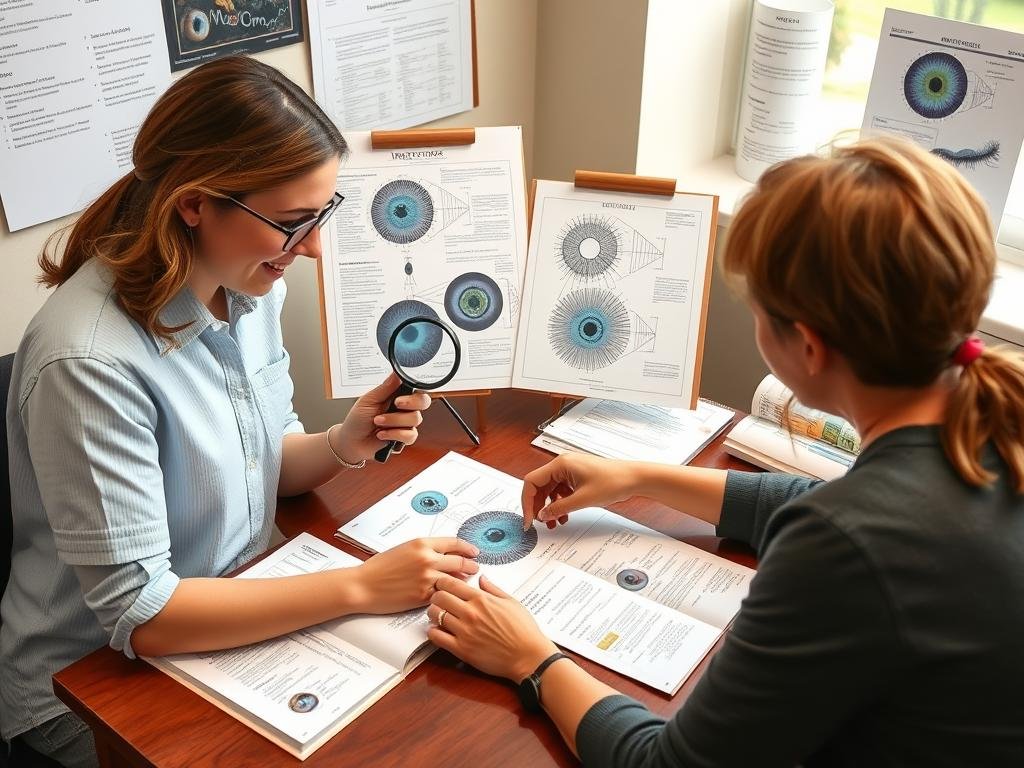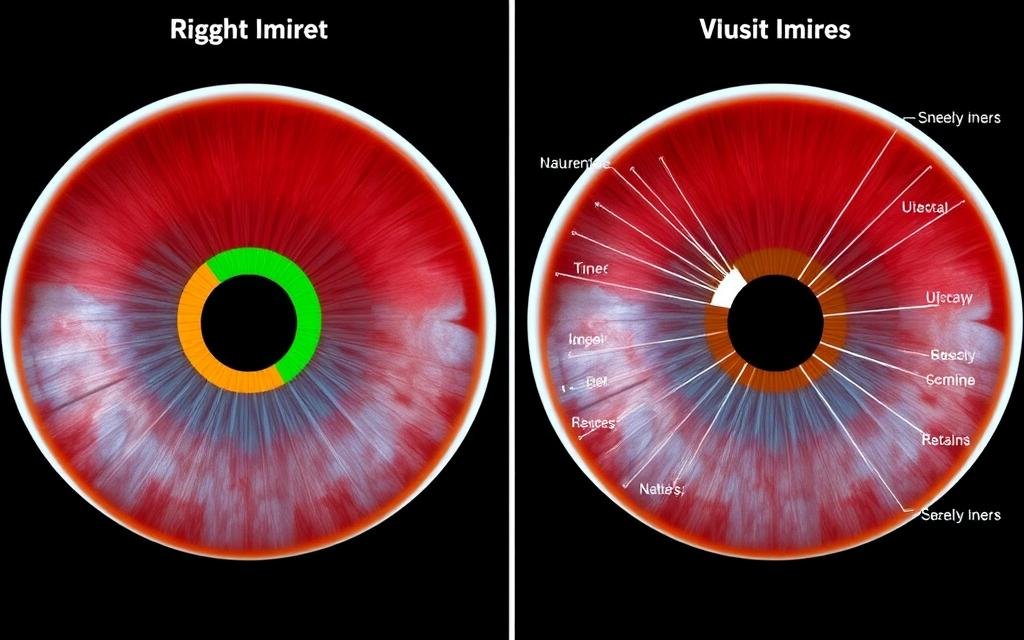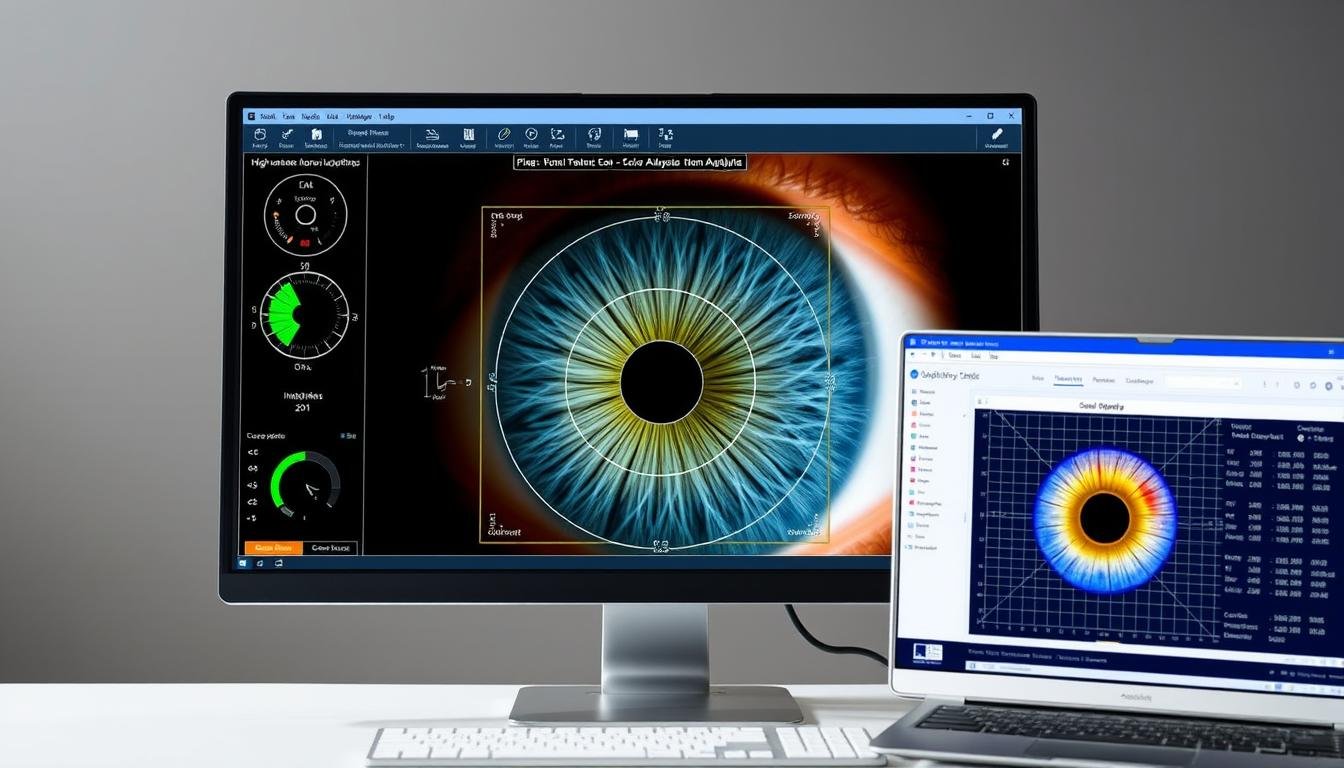Compréhension Graphiques d'iridologie and Their Purpose
Iridologie is the study of the iris—the colored part of the eye—to assess potential health conditions. Practitioners believe that different zones of the iris correspond to various organs and systems in the body. An tableau d'iridologie serves as a map that helps interpret these connections.
Un typique tableau d'iridologie showing how different areas of the iris correspond to various body systems
These specialized charts divide the iris into multiple sections, each linked to specific body parts. By examining changes in color, texture, and markings within these zones, iridologists claim they can identify areas of the body experiencing stress or potential health issues. While conventional medicine doesn’t recognize iridology as a diagnostic tool, many alternative health practitioners continue to use these charts as part of their holistic assessment approach.
The Origins of the Tableau d'iridologie
The practice of examining the iris for health insights has ancient roots, though the formalized charts we recognize today emerged much later. Let’s explore how this fascinating system developed through the ages.
Ancient Beginnings of Iris Analysis
References to iris examination can be found in ancient Egyptian and Babylonian texts dating back over 3,000 years. Hippocrates, the father of modern medicine, reportedly studied the eyes for signs of health conditions in the 5th century BCE. Chinese medicine also incorporated eye diagnosis as part of its comprehensive approach to health assessment.

Ancient Egyptian depictions of eye examination, precursors to modern iridology
Dr. Ignaz von Peczely: Father of Modern Graphiques d'iridologie
The first formal tableau d'iridologie is credited to Dr. Ignaz von Peczely, a Hungarian physician in the 19th century. As the story goes, as a child, von Peczely noticed changes in an owl’s iris after the bird suffered a broken leg. This observation sparked his lifelong study of the connection between iris markings and physical conditions.
In 1881, von Peczely published his groundbreaking book “Découvertes dans le domaine des sciences naturelles et de la médecine : enseignement de l'étude du diagnostic oculaire,” which included the first detailed tableau d'iridologie. His map divided the iris into approximately 80 zones, each corresponding to different organs and body systems.

Dr. Ignaz von Peczely’s original tableau d'iridologie from 1881
Evolution of Tableau d'iridologie Designs
From von Peczely’s initial work, iridology charts have undergone significant refinement and expansion. Different schools of thought have emerged, each with their own approach to iris mapping.
Key Contributors to Tableau d'iridologie Development
Several pioneers have shaped modern iridology through their research and chart innovations:
- Dr. Josef Deck (1914-1984) – German practitioner who developed a more detailed sectoral analysis system, dividing the iris into 60 sectors
- Dr. Bernard Jensen (1908-2001) – American chiropractor who popularized iridology in North America and created comprehensive charts used widely today
- Denny Johnson – Developer of Rayid Iridology, which focuses on psychological and emotional patterns in the iris
- Dr Ellen Tart-Jensen – Modern practitioner who refined charts to include nutritional correlations

The evolution of tableaux d'iridologie from the 1880s to modern digital versions
Moderne Tableau d'iridologie Systèmes
Today’s iridology charts vary in complexity and approach, but most share common elements:
Topographic Zone Systems
Modern charts typically divide the iris into concentric rings and radial zones. The outer ring often represents the skin, muscles, and extremities, while inner rings correspond to deeper organs and systems. This topographic approach allows for precise mapping of body regions.
Color Coding Systems
Contemporary charts often use color coding to indicate different types of conditions. For example, white markings might indicate inflammation, while dark spots could suggest toxin accumulation. These color systems help practitioners quickly identify potential areas of concern.

A modern digital tableau d'iridologie with color-coded zones and detailed organ correlations
Learning to Use an Tableau d'iridologie
For those interested in exploring iridology further, there are various educational resources available to learn about iris analysis and chart interpretation.

A student learning to interpret iris patterns using an tableau d'iridologie
Getting Started with Graphiques d'iridologie
If you’re interested in learning more about iridology, consider these starting points:
- Basic Education – Start with introductory books or online courses that explain fundamental principles
- Chart Familiarization – Study standard tableaux d'iridologie to understand the basic mapping system
- Photographie de l'iris – Learn to take clear, well-lit photographs of the iris for analysis
- Supervised Practice – Work with experienced practitioners to develop your observation skills
- Formation continue – Attend workshops and seminars to refine your knowledge
Commencez votre voyage en iridologie
Ready to explore the fascinating world of iris analysis? Our comprehensive beginner’s guide includes printable tableaux d'iridologie, step-by-step tutorials, and expert insights to help you get started.
Get Your Free Beginner’s Guide
Conclusion: The Continuing Evolution of Graphiques d'iridologie
From ancient observations to digital analysis, tableaux d'iridologie have evolved significantly while maintaining their core purpose—mapping the iris to gain insights into overall health. Whether viewed as a scientifically unproven practice or a valuable complementary health tool, iridology continues to fascinate and intrigue people worldwide.
As technology advances and research continues, we may gain new perspectives on the relationship between iris patterns and health. For now, tableaux d'iridologie remain an interesting intersection of ancient wisdom and modern holistic health practices—a reminder that the human body contains many fascinating connections we are still working to fully understand.
Explore Professional Iridology Resources
Whether you’re a health practitioner looking to incorporate iridology into your practice or simply curious about what your iris might reveal, our comprehensive resources can help you navigate this fascinating field.
Discover Certified Iridology Resources
L'iridologie est-elle scientifiquement prouvée?
Iridology has not been validated by large-scale scientific studies, and most medical authorities do not recognize it as a diagnostic tool. However, many holistic practitioners find value in its use as a complementary assessment method when used alongside conventional medical care.
Quelle est la précision tableaux d'iridologie?
The accuracy of iridology charts is debated. While some practitioners report consistent correlations between iris signs and health conditions, controlled studies have not demonstrated reliable diagnostic accuracy. Many practitioners view iridology as one tool among many for health assessment rather than a definitive diagnostic method.
How can I find a qualified iridologist?
Look for practitioners who have completed formal training through recognized iridology organizations. Many naturopaths, holistic health practitioners, and some chiropractors incorporate iridology into their practice. Always check credentials and ask about their specific training in iridology chart interpretation.

























